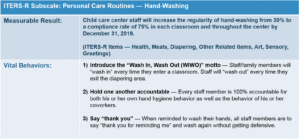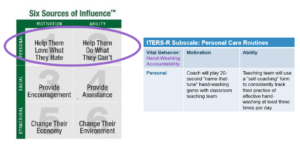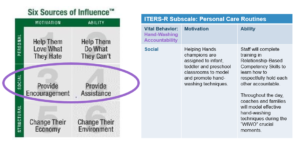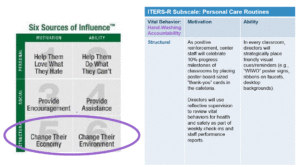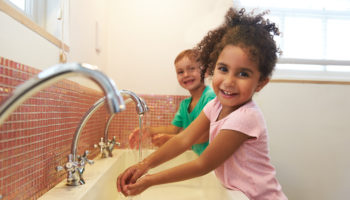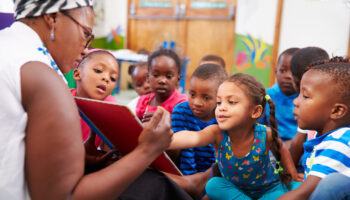Arrealia Gavins
Bainum Family Foundation
At the Bainum Family Foundation, we’re working to expand the availability of high-quality early learning seats for infants and toddlers in the District of Columbia’s Wards 7 and 8. And one key element of this work includes our community of practice that helps infant and toddler teachers meet the requirements in the Infant Toddler Environment Rating Scale — Revised (ITERS-R). With seven subscales that each encompass multiple criteria, this observational tool thoroughly defines and measures quality.
Aligning with these requirements can call for a great deal of effort, and implementing any new idea, strategy or approach often feels uncomfortable because it involves the unknown. But working through this period of discontinuity is a prerequisite for growth and long-term success. Through our community of practice, we foster a spirit of innovation and help our partner centers and family child care homes create the changes they desire — and they consistently experience success. How? By using the multi-pronged Influencer model developed by Vital Smarts.
This popular model has been leveraged by several prominent companies across the country and across multiple industries for workplace safety, compliance and process improvement. Based on their reported results, we believed it had potential to benefit the early learning profession. And with the results our partner providers now deliver, we believe those instincts were correct.
In collaboration with each other and the Foundation, community of practice participants first “clarify measurable results” by developing an ITERS-R-related “SMART” goal for their sites. With that goal identified, we then walk through the remainder of the Influencer model. We recognize “crucial moments” to implement change, “find vital behaviors” (i.e., behaviors that will help us achieve our goal) and then “use the Six Sources of Influence” — working together to select one tactic for each of the Six Sources that targets the goal. These six sources are:
- Personal Motivation (Help Them Love What They Hate)
- Personal Ability (Help Them Do What They Can’t)
- Social Motivation (Provide Encouragement)
- Social Ability (Provide Assistance)
- Structural Motivation (Change Their Economy)
- Structural Ability (Change Their Environment)
As an example of how this works, let’s focus on the ITERS-R subscale “Personal Care Routines” — specifically on the criteria for “hand-washing.” We’ll start with clarifying the measurable result and identifying the vital behaviors, the first of which addresses this goal’s crucial moments.
We then use the measurable result, vital behaviors and crucial moment — entering a room and exiting a diapering area — to use the Six Sources of Influence. Participants must commit to at least one tactic for each source, and during this exercise, we brainstorm multiple options from which they can choose. The Six Sources are organized into three categories — Personal, Social and Structural — and the below charts walk through the exercise according to that grouping.
With at least six tactics identified, our partner providers have six different methods and opportunities to create the change they desire in their environments. As we all know, sometimes one plan doesn’t work, as no plan is truly “one size fits all.” However, with a comprehensive plan that deploys six mini-strategies at the same time, participants greatly increase the likelihood of their intentions resonating with their staff and causing sustainable behavior change.
Our community of practice consistently reflects a willing and open attitude — and powered by this model, we believe our providers can enhance their work and deliver even better care to children and families in our community.
Senior Manager, Early Learning, Practice
Arrealia Gavins is Senior Manager, Early Learning, Practice at the Bainum Family Foundation in Bethesda, Maryland, where she supports the Foundation’s early learning practice partners in Washington, D.C., with a wide range of training and technical assistance on developmentally appropriate practices, infant and toddler career development, staff retention, school readiness, practice-based coaching, pedagogical leadership and overall programmatic quality supports. Before joining the Foundation, she supported child and family development programs, with a focus on early childhood education, program administration, community systems development and organizational culture change.
